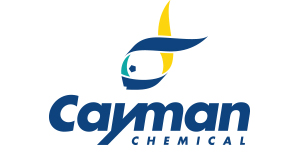Palmitoyl Ethanolamide-d4, CAS 946524-34-1
Palmitoyl Ethanolamide-d4, CAS 946524-34-1
Artikelnummer
CAY9000551-100
Verpackungseinheit
100 µg
Hersteller
Cayman Chemical
Verfügbarkeit:
wird geladen...
Preis wird geladen...
Formulation: A solution in ethanol
Formal Name: N-(2-hydroxyethyl-1,1',2,2'-d4)-hexadecanamide
Purity: ≥99% deuterated forms (d1-d4)
Formula Markup: C18H33D4NO2
Formula Weight: 303,5
Shelf life (days): 365
CAS Number: 946524-34-1
Notes: Palmitoyl ethanolamide-d4 (PEA-d4) is intended for use as an internal standard for the quantification of PEA (Item No. 90350) by GC- or LC-MS. PEA is an endogenous fatty N-acyl ethanolamine and a derivative of the endocannabinoid arachidonoyl ethanolamide (AEA; Item No. 90050).{2415,2714} It selectively activates peroxisome proliferator-activated receptor α (PPARα; EC50 = 3.1 µM) over PPARβ/δ and PPARγ in HeLa cells expressing the human receptors.{67463} PEA binds to RBL-2H3 basophil membranes (IC50 = 1 nM), which endogenously express cannabinoid 2 (CB2), but not CB1, receptors, and inhibits antigen-induced serotonin release from RBL-2H3 cells (EC50 = 0.27 µM).{2714} It prevents decreases in paw withdrawal latency in a radiant heat hypersensitivity test, an effect that can be reversed by the CB1 receptor antagonist SR141716 (rimonabant; Item No. 9000484), PPARγ antagonist GW 9662 (Item No. 70785), and transient receptor potential vanilloid 1 (TRPV1) antagonist capsazepine (Item No. 10007518), in a mouse model of neuropathic pain induced by chronic constriction injury of the sciatic nerve.{67464} PEA (10 mg/kg) decreases carrageenan-induced paw edema in wild-type, but not Ppara-/-, mice.{67463} It inhibits tonic convulsions induced by pentylenetetrazole (PTZ; Item No. 18682) in rats when administered at a dose of 40 mg/kg.{13324} Formulations containing palmitoyl ethanolamide have been used as dietary supplements.
Formal Name: N-(2-hydroxyethyl-1,1',2,2'-d4)-hexadecanamide
Purity: ≥99% deuterated forms (d1-d4)
Formula Markup: C18H33D4NO2
Formula Weight: 303,5
Shelf life (days): 365
CAS Number: 946524-34-1
Notes: Palmitoyl ethanolamide-d4 (PEA-d4) is intended for use as an internal standard for the quantification of PEA (Item No. 90350) by GC- or LC-MS. PEA is an endogenous fatty N-acyl ethanolamine and a derivative of the endocannabinoid arachidonoyl ethanolamide (AEA; Item No. 90050).{2415,2714} It selectively activates peroxisome proliferator-activated receptor α (PPARα; EC50 = 3.1 µM) over PPARβ/δ and PPARγ in HeLa cells expressing the human receptors.{67463} PEA binds to RBL-2H3 basophil membranes (IC50 = 1 nM), which endogenously express cannabinoid 2 (CB2), but not CB1, receptors, and inhibits antigen-induced serotonin release from RBL-2H3 cells (EC50 = 0.27 µM).{2714} It prevents decreases in paw withdrawal latency in a radiant heat hypersensitivity test, an effect that can be reversed by the CB1 receptor antagonist SR141716 (rimonabant; Item No. 9000484), PPARγ antagonist GW 9662 (Item No. 70785), and transient receptor potential vanilloid 1 (TRPV1) antagonist capsazepine (Item No. 10007518), in a mouse model of neuropathic pain induced by chronic constriction injury of the sciatic nerve.{67464} PEA (10 mg/kg) decreases carrageenan-induced paw edema in wild-type, but not Ppara-/-, mice.{67463} It inhibits tonic convulsions induced by pentylenetetrazole (PTZ; Item No. 18682) in rats when administered at a dose of 40 mg/kg.{13324} Formulations containing palmitoyl ethanolamide have been used as dietary supplements.

 English
English







